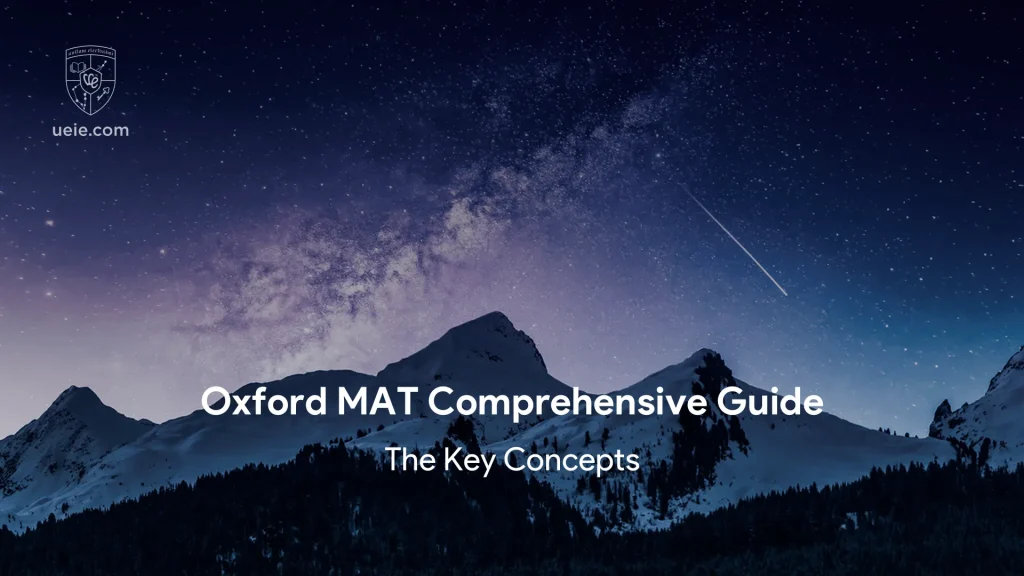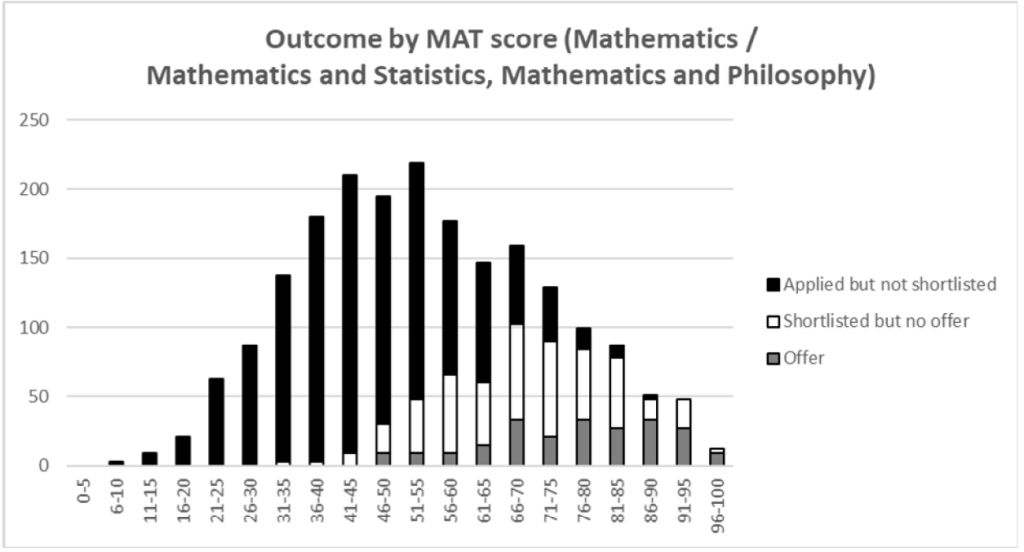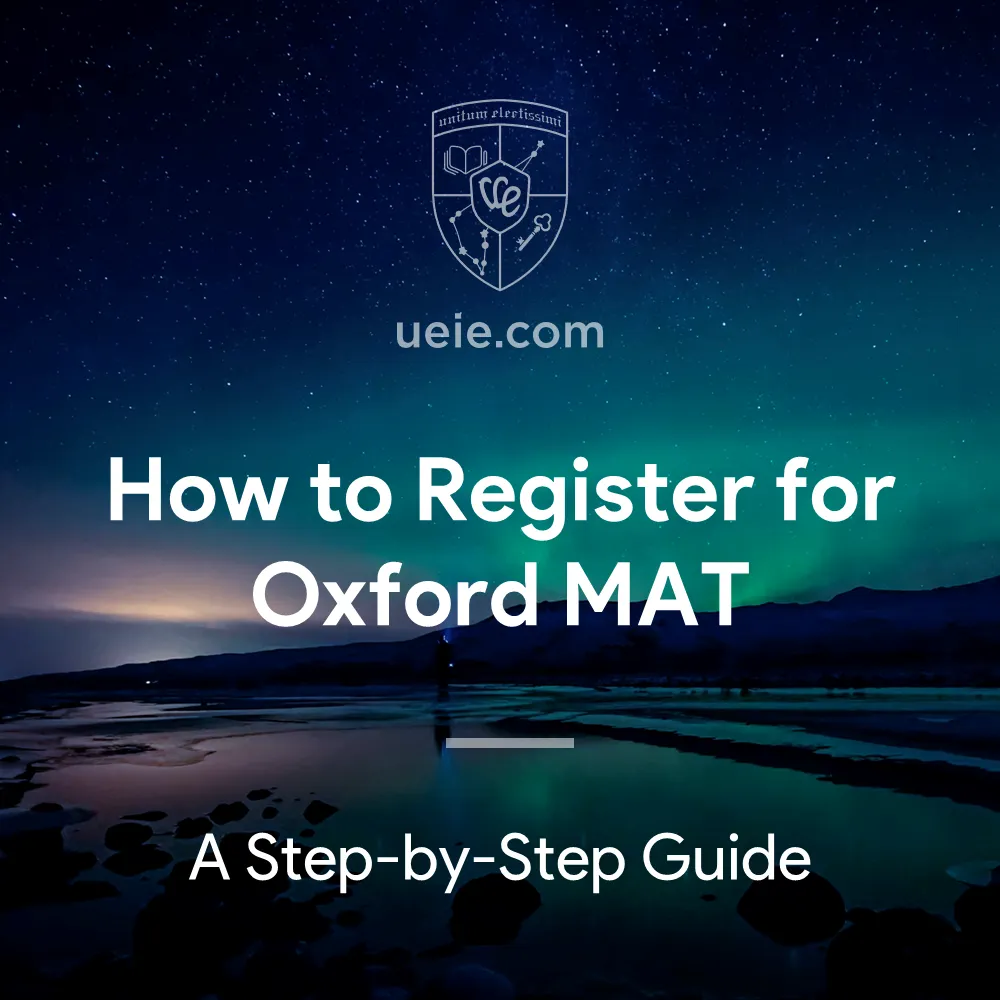Oxford MAT Unpacked: Mastering the Test for Maths & CS Admissions

Independent Teacher
Oxford MAT Unpacked: Mastering the Test for Maths & CS Admissions

The Oxford MAT test (Mathematics Admissions Test) is an entrance examination used by the University of Oxford to assess the mathematical aptitude and potential of undergraduate applicants for Mathematics, Computer Science, and related degree programmes. It primarily evaluates a student’s mathematical thinking, logical reasoning, and problem-solving abilities.
To assist students planning to apply for 2026 entry in mastering the latest and most accurate MAT test information, this document (revised by Mr. Xie Tao) will systematically outline its key developments, requirements, format, scoring, syllabus, and preparation resources.
After understanding this overview of the MAT, it is recommended to continue reading the Oxford MAT Preparation Guide and the Oxford MAT Registration Guide for detailed preparation strategies and registration guidance.
I. Latest Oxford MAT Developments and Changes (2025 Examination Season)
The Oxford MAT test underwent a series of significant changes in 2024. Candidates must understand these core changes. The exam board has implemented them. They will continue through the 2025 exam season (for 2026 entry).
- Test Administrator: The University of Oxford continues to designate Pearson VUE as its global partner for administering admissions tests. The examination will still be conducted at Pearson VUE authorised test centres.
- Test Format: The Oxford MAT has transitioned entirely to an online, computer-based examination. The process no longer involves paper-based question papers or answer sheets.
- Paper Structure: The test has adopted a new, unified paper structure. All candidates applying for relevant degree programmes will sit the same paper, comprising 25 multiple-choice questions and 2 short-answer questions. Answers to the short-answer questions must be typed using a standard keyboard. The practice of having different combinations of questions for different degree programmes has been discontinued.
- Question Setters: It is important to note that, despite the changes in administration and format, the responsibility for setting the MAT questions remains with the Mathematical Institute at the University of Oxford, ensuring the continuity of its academic standard and style.
For students preparing for the 2025 Oxford MAT test, it is imperative to base their preparation and practice on the new model of an online, computer-based test featuring multiple-choice and short-answer questions.
II. Who Needs to Take the Oxford MAT Test? (2026 Entry Requirements)
Clarifying which universities and degree programmes require MAT scores is the first step in determining whether you need to sit this examination. According to the latest information, the MAT is currently primarily and mandatorily used by the University of Oxford for admission to its specific undergraduate programmes.
1. University of Oxford
For 2026 entry, candidates for the following undergraduate (or integrated Master’s) degree programmes at the University of Oxford must take the MAT test at the time of application, and there is no alternative test to the Oxford MAT:
| Degree Programme | UCAS Code |
|---|---|
| Mathematics | G100 |
| Mathematics and Statistics | GG13 |
| Mathematics and Philosophy | GV15 |
| Mathematics and Computer Science | GG14 |
| Computer Science | G400 |
| Computer Science and Philosophy | IV15 |
2. Other Universities
Imperial College London: Since the 2024/25 admissions cycle, the Department of Mathematics no longer requires applicants to take the MAT. Their specific requirements involve the TMUA, STEP, or other assessment methods. The Department of Computing, however, requires applicants to take the TMUA examination. Please consult the Imperial College London website for the most current information.
University of Warwick: Since the 2024/25 admissions cycle, the Mathematics and Statistics departments no longer accept MAT scores. Instead, they require applicants to provide TMUA scores, or, under specific conditions, accept STEP scores as an alternative. Please consult the University of Warwick website for their latest detailed requirements.
Conclusion: In the current admissions cycle (for 2026 entry), the MAT can essentially be considered a mandatory entrance examination exclusively for the aforementioned degree programmes at the University of Oxford. Students applying to related programmes at other universities should focus on the TMUA, STEP, or other entrance examinations specified by those institutions.
III. MAT Test Key Dates (2025-2026 Cycle)
Students planning to apply for 2026 entry should pay close attention to the following key dates related to the MAT examination. It is imperative to refer to the latest information published on the University of Oxford’s official website and plan accordingly in advance:
| Event | Date / Timeframe | Notes / Reminders |
|---|---|---|
| Registration Time | 18 June to 19 September 2025 | An account must be created via the Oxford website. |
| Test Slot Registration | 18 August to 26 September 2025 | Ensure Pearson VUE test slot booking is completed by this date. |
| Test Dates | Wednesday, 22 October 2025 and Thursday, 23 October 2025 | Select a specific test session via the Pearson VUE system. |
| Interview Invites | November to December 2025 | Sent by email after Oxford University completes its shortlisting. |
| Results Release | January 2026 | Released to candidates via the test registration platform (or email notification). |
Important Note: All dates (particularly the specific start and end times for registration) are subject to change. Please ensure you regularly visit the MAT page on the University of Oxford admissions website and the Pearson VUE Oxford admissions test page for the most authoritative official information.
IV. Oxford MAT Test Format and Structure
Since the reforms in 2024, the Oxford MAT has adopted a new online format and a unified structure, as detailed in the table below.
| Item | Details |
|---|---|
| Test Mode | Online Computer-based Test |
| Test Location | Global Pearson VUE authorised test centres |
| Duration | 150 minutes (2.5 hours) |
| Structure | Unified Paper
|
| Requirement | All candidates must answer all 27 questions; short-answer questions require typed input using a standard keyboard. |
| Calculator | Not Permitted |
| Formula Sheet | Not Permitted |
| Dictionary | Not Permitted |
Key Points Explained
- Online, computer-based test: Candidates need to familiarise themselves with the online examination environment and interface.
- Unified paper: There is no longer a differentiation by degree programme; all candidates face the same challenge.
- Short-answer input: Practice in typing mathematical symbols and expressions using a keyboard is required.
- No auxiliary tools: This places high demands on mental arithmetic, written calculation skills, and the proficient recall of formulae.
V. Oxford MAT Scoring Mechanism and Interpretation of Results
Understanding how the MAT test is scored and what the scores signify can help candidates set targets and evaluate their performance more scientifically.
1. Scoring Method
The MAT test has a maximum score of 100 marks.
Question Weighting
- There are 25 multiple-choice questions, totalling 70 marks. The typical mark distribution is:
- Questions 1-10: 2 marks each (20 marks total)
- Questions 11-20: 3 marks each (30 marks total)
- Questions 21-25: 4 marks each (20 marks total)
- There are 2 short-answer questions, worth 15 marks each, totalling 30 marks. Partial marks are awarded for short-answer questions based on the correctness and clarity of the solution steps and the final answer.
Scoring Features
- No negative marking: Incorrect answers to multiple-choice questions do not result in a deduction of marks; therefore, candidates are encouraged to attempt all questions.
- Raw scoring: The scores for each question are directly summed to produce the final mark; there is no complex weighting or conversion.
2. Results Reporting
- Internal Use: Admissions tutors at the University of Oxford receive candidates’ MAT scores in November, which are used in conjunction with UCAS application materials for shortlisting for interviews.
- Candidate Enquiries: Candidates typically receive their final application outcome from the University of Oxford the following January (i.e., January 2026) before they can access their specific MAT score via the test registration platform.
3. Interpretation of Results
The set of charts below presents official data on MAT scores and the number of students admitted to related degree programmes since 2007. This includes the average scores for All Applicants, Shortlisted Applicants, and Successful Applicants, as well as the corresponding numbers of applicants, those shortlisted, and those who received offers.
As can be seen from the charts, the aforementioned three sets of Oxford MAT average scores vary each year. Furthermore, there is no definitive ‘admissions threshold’ or ‘cut-off score’ for the MAT examination – final admission decisions are based on a holistic assessment of the applicant’s overall profile, with the MAT score being merely one significant component. This point is also evident from the distribution charts of MAT scores and admission numbers published officially over the years, as illustrated below.

Distribution of MAT Scores for Each Range Published by the Oxford Mathematics Department in 2024
4. Competitiveness Analysis
Based on student cases I have tutored over the past decade and officially published MAT results, the higher the MAT score, the greater the chance of admission. Generally speaking:
- High-scoring range (85 marks and above): Students achieving this level of score usually possess strong overall qualities. Provided they perform consistently in the interview, their likelihood of receiving an offer is very high.
- Good chance of interview range (65 marks and above): Students who achieve an average score or slightly below average, provided their overall application is strong, are generally given an interview opportunity by Oxford. However, for students from mainland China, a higher score, perhaps 70 or even 75 and above, may be necessary to secure an equivalent chance of an interview.
- Average level and below (below 50 marks): It is generally more difficult to receive an interview invitation unless there are particularly outstanding aspects in the application materials or special circumstances such as regional or school-based policy considerations.
VI. Oxford MAT Test Syllabus and Difficulty Analysis
Accurately grasping the scope and difficulty characteristics of the Oxford MAT is fundamental to formulating an effective preparation plan.
1. Test Syllabus Scope
- Knowledge Base: The MAT syllabus is primarily based on the Pure Mathematics component of A-Level Mathematics (excluding A-Level Further Mathematics).
- Syllabus Stability: The MAT syllabus is relatively stable and is not revised annually. The current official version provided was published in 2018. Although the examination format changed in 2024, the scope of knowledge remains unchanged.
2. Syllabus Characteristics and 'Beyond the Syllabus' Content
- Concise yet In-depth: The official MAT syllabus is relatively concise, covering a narrower range of topics than the full A-Level Mathematics. However, this does not mean the examination is simple. The University of Oxford’s design philosophy aims to base the test on the common foundations of mathematics curricula across different countries to ensure fairness, but the questions will delve deeply into students’ understanding, application, and extension of fundamental concepts.
- Thinking over Knowledge: The core of the examination is to assess mathematical thinking potential, the rigour of logical reasoning, and the ability to solve non-standard problems, rather than merely testing the recall and reproduction of knowledge points.
- Common ‘Beyond the Syllabus’ Topics: Despite the limited syllabus scope, MAT questions frequently feature topics that are not typically covered in depth or at all in A-Level (or even Further Mathematics) courses, requiring candidates to use foundational knowledge for reasoning and problem-solving. These common themes include, but are not limited to:
- Elementary Number Theory
- Logic and Proof
- Recurrence Relations
- In-depth applications of Sequences and Series
- Basic Algorithmic Thinking
- Combinatorial Problems
3. Knowledge Point Distribution
The knowledge points tested in the MAT test are relatively evenly distributed, covering core areas of A-Level Mathematics such as Algebra, Functions, Coordinate Geometry, Trigonometry, Calculus, and Sequences and Series. It also incorporates logical reasoning and some ‘beyond the syllabus’ mathematical ideas. For a detailed breakdown of specific knowledge points, please refer to the official syllabus.
For a more in-depth research analysis of MAT test hotspots and difficulties, please refer to my previous article:
MAT Secrets: Expert Insights into Exam Difficulty and Patterns
4. Difficulty Characteristics and Analysis
- Higher than A-Level: The depth of thinking, flexibility, and demand for rigour in MAT questions are significantly higher than in standard A-Level examinations. It requires candidates to apply familiar knowledge in novel and unfamiliar contexts.
- Comparison with STEP Examination: The MAT does not demand as broad or as deep knowledge of Further Mathematics as STEP, and the question lengths are typically shorter. However, the MAT similarly emphasises rigorous logic and clear expression, and may include more ‘compact’ but ingeniously designed problems.
- Comparison with TMUA Examination: The TMUA places more emphasis on the rapid and accurate application of AS Mathematics knowledge and logical judgment under intense time pressure. The time pressure in the MAT is relatively less, but it focuses more on the depth of mathematical thinking, creativity, and insight into problem-solving.
- Recent Difficulty Trends: Judging by the average scores in recent years, the difficulty of the MAT has remained at a high level. The average score after the 2024 reforms saw a slight increase, but this may be related to the increased proportion of multiple-choice questions and does not necessarily indicate a decrease in the intellectual difficulty of the questions themselves. Achieving a high score (e.g., 75 marks or above) remains a significant challenge for most candidates.
For a more in-depth comparison of the Oxford MAT test with the STEP and TMUA examinations, you can refer to my article:

STEP vs TMUA vs MAT: A Strategic Comparison to Choose Your Maths Test
VII. How to Register for the MAT Test?
Registering for the MAT test primarily involves creating an account on the University of Oxford’s official website and linking it to your application information, followed by booking a specific test centre and time slot via the Pearson VUE platform.
The specific registration steps, required information, test centre selection, fee information, applications for special arrangements, and detailed guidance for candidates in different regions are all very important and may involve numerous details.
To obtain the most complete and accurate step-by-step operational guidance, please be sure to consult our specially prepared detailed guide:

How to Register for Oxford MAT
VIII. Oxford MAT Core Preparation Strategies and Resource Recommendations
Effective MAT preparation requires not only knowledge acquisition but also the right strategies and high-quality resources.
1. Overview of Core Preparation Strategies
The core of MAT preparation lies in enhancing the depth of mathematical thinking, the rigour of logical reasoning, and the ability to creatively solve problems. Unlike STEP, which focuses on the breadth and depth of knowledge, or TMUA, which emphasises speed and skill proficiency, the MAT places greater importance on a candidate’s mathematical insight demonstrated through foundational knowledge. Preparation should focus on:
- In-depth Understanding of Concepts: Do not be satisfied with superficial formulae; understand the meaning and connections between theorems and methods.
- Practising Problem-Solving Techniques: Develop the ability to apply knowledge in novel situations through high-quality questions (especially past papers).
- Cultivating Logical Thinking: Strengthen the habit of rigorous argumentation and clear expression of mathematical ideas.
For detailed strategies on how to create a preparation plan, learning methods for different stages, and targeted improvement of core abilities, please refer to my specially written:

Master the Oxford MAT: Strategies for Unique Problems & Online Format
2. Official Core Preparation Resources
The University of Oxford’s Mathematical Institute website is the primary platform for obtaining the most authoritative MAT preparation information and materials.
All candidates are strongly advised to make full use of:
- Past Papers: The most crucial practice material for familiarising oneself with question types and difficulty levels.
- MAT Practice Tests: Using past MAT papers can help candidates become familiar with the actual examination interface and answering methods.
- Examination Syllabus: Clearly defines the scope and requirements of the examination.
- Annual Feedback Reports: Provide statistical data and analysis from previous examinations, offering insights into score distributions and common issues.
- Preparation Advice and Videos: Official preparation guidance and possible recordings of online lectures/live streams.
3. UEIE Oxford MAT Preparation Resources
To help candidates prepare for the MAT more systematically and efficiently, I (Mr. Xie Tao), based on many years of teaching and research experience, have developed and continually update a series of MAT test preparation courses and materials. This year’s newly released MAT self-study package includes:
- Oxford MAT Video Lecture Series: Contains in-depth explanations of examination points and accompanying PDF textbooks.
- Oxford MAT Practice Question Bank: Provides a vast number of practice questions categorised by topic, supplementing the limited official past papers and strengthening problem-solving skills.
- Oxford MAT Full-Length Mock Exams: Four sets of full mock examination papers. All questions are original or adapted and do not use past paper questions, suitable for optimising test-taking strategies and condition before the examination.
Click here to learn more about UEIE MAT preparation resource details:

TMUA & MAT On-Demand Prep Suite
1.084 € – 1.567 €Price range: 1.084 € through 1.567 €
4. Other Supplementary Resources
The following resources can also help improve the mathematical thinking and problem-solving skills required for the MAT, and can be used selectively according to individual circumstances:
- Underground Mathematics: Provides a wealth of thought-provoking higher mathematics problem resources.
- STEP Support Programme: Although primarily aimed at STEP, the problem-solving methods and thinking training it offers are also beneficial for the MAT.
- Dr Frost Maths MAT Resources: Offers some MAT-related practice resources (requires searching within the website).
- Relevant Books: Such as books focused on mathematical thinking training or advanced problem-solving.
5. Core Advice
Resources should be chosen for quality, not quantity. It is essential to focus on official past papers and materials as the core, and selectively and thoroughly utilise high-quality supplementary resources, such as the systematised preparation programme offered by UEIE, to address individual weaknesses.
IX. Next Steps and Recommendations
After reading this ‘Comprehensive Guide to the Oxford MAT,’ you should have a clear and comprehensive understanding of this important entrance examination. To translate this understanding into effective application preparation, it is recommended that you take the following actions immediately:
1. Verify Official Requirements
Immediately visit the official University of Oxford admissions website to carefully confirm the latest and most accurate admissions requirements for 2026 entry, particularly the specific regulations for your target degree programme (confirm if MAT is mandatory).
2. Plan Examination Registration
Carefully read the Oxford MAT Registration Guide to fully understand the registration process, required materials, timelines, and test centre selection. Keep in mind the officially announced registration opening and closing dates, and ensure you complete your Oxford account registration and Pearson VUE test slot booking within the specified timeframe.
3. Develop a Preparation Plan
Study the Oxford MAT Preparation Guide in depth to create a detailed and feasible preparation plan tailored to your own situation. Start your preparation as early as possible, especially if you need to significantly improve your depth of mathematical thinking and problem-solving abilities.
4. Select and Utilise Resources
- Focus on Official Materials: Download and study the latest MAT test syllabus, official past papers, solutions, and preparation advice provided on the University of Oxford website.
- Systematic Learning: Based on your preparation plan, selectively use high-quality supplementary resources, such as the MAT preparation courses and materials offered by UEIE, for systematic learning and targeted training.
- Familiarise Yourself with the Platform: Use the Pearson VUE practice tests provided officially to become familiar with the online examination environment.

Oxford MAT Prep Hub
Finally, please remember that thorough preparation and a positive mindset are key to tackling the Oxford MAT challenge. I wish you success in your preparation and application, and ultimately, admission to your desired university!
Follow Us on Wechat



